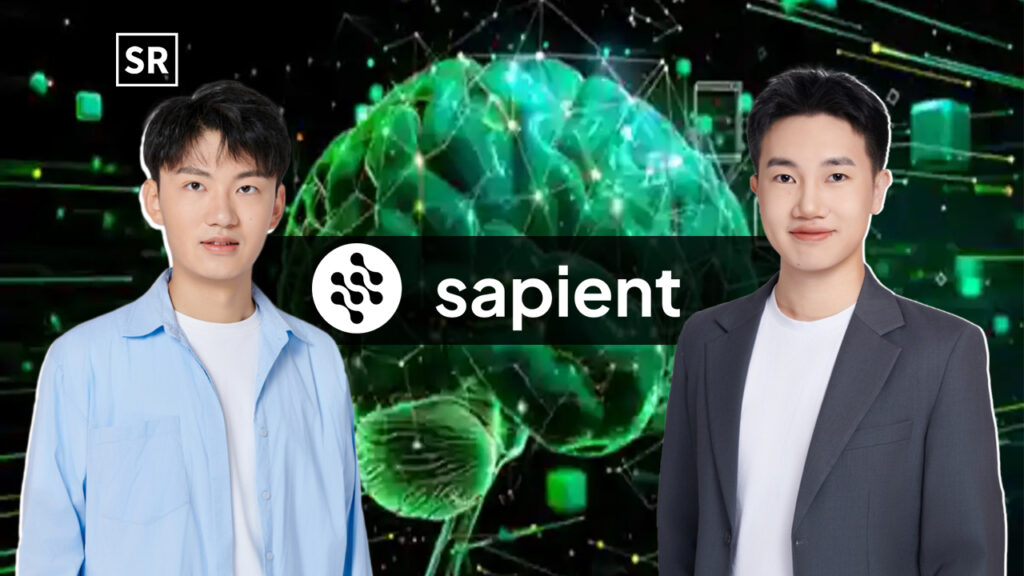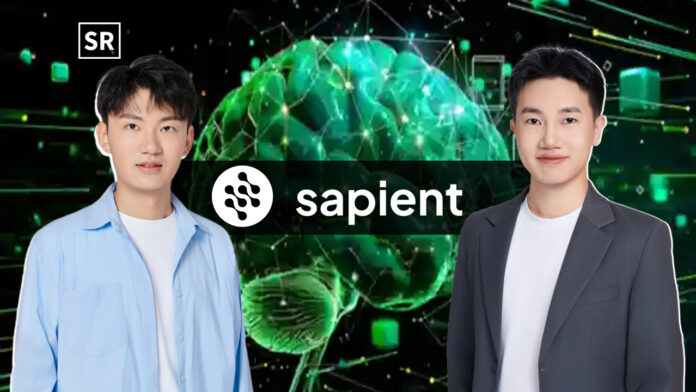
In the rapidly changing world of artificial intelligence, few stories capture ambition and invention like those of Guan Wang and William Chen, the founders of Sapient Intelligence. Based in Singapore, their startup is developing brain-based AI architectures to create artificial general intelligence (AGI). This story traces their personal paths, the challenges they had to overcome and the audacious thinking that accompanied their work on self-evolving machine intelligence.
Early Beginnings: Roots in Academia and Competition
Sapient Intelligence was established in 2024, but its origins date back years. Both co-founders are Tsinghua University alumni from Beijing, and both can trace their early beginnings as innovators to this organization.
Read also- From Fans to a Billion-Dollar Media Empire: The Journey of Minute Media’s Founders
Guan Wang’s Path from Competitions to AI Frontiers
Guan Wang’s journey into AI began as a post-00s student excelling in high-stakes algorithm and informatics competitions during high school. Such an experience polished his problem-solving skills, and he then received a referral to Tsinghua University, where he was recommended for admission to the Bachelor of Computer Science program.
There, he worked full-stack on neural computation and applied AI engineering, balancing theory with practical application.
In Tsinghua, Wang continued, and he eventually settled in Cambridge, Massachusetts. His scholarly activities include co-founding Learnable.ai, which focuses on human-centred AI and was named a World Economic Forum Technology Pioneer in 2021.
This early experiment introduced him to the challenges of deploying AI in real-world applications, encompassing machine learning algorithms and scalable systems. But what Wang really cared about was scaling up from narrow AI to systems capable of human-like reasoning—a theme that would continue to shape his work.
Read also – The Story of Stoyana Natseva and Happy Life Academy Transforming Lives.
William Chen’s Engineering Foundations and Venture Drive
William Chen had a mechanical engineering background to add to Wang’s computational skills. Between 2019 to 2023, Chen studied engineering at Tsinghua University, engaging in intelligence project application for academia and the industry. His position was to lead the venture development of more than 20 medical engineering research groups, which entailed managing university-industry engagements as well as shaping collaborations.
Then, at the Cranbrook Schools, during his senior year of high school, Chen became even more disciplined in grappling with complex systems. His hardware and strategic management background helped him understand the multi-disciplined crosses found in AI startups, where technical innovation also meets practical day-to-day realities.
Forging a Partnership for AGI
The partnership between Wang and Chen grew out of similar networks at Tsinghua, as well as a mutual interest in neuroscience-inspired computing. In 2024, during the global AI renaissance they noticed a key gap: most of the larger language models were good at pattern matching but unable to solve tasks that required deep, hierarchical reasoning; such as expert-level Sudoku or abstract puzzles from the ARC-AGI benchmark.
Their effort focused on the idea of making AI that in some way mimics how the brain processes information through layers: high-level strategy for planning, low-level execution for details. This brain-inspired approach is what the Sapient Intelligence in Singapore, a product of a dynamic tech scene, has been built upon. Over late-night discussions, what started as a conversation became a shared dream to create intelligence that could learn on its own and solve the most challenging problems in society.
Read also- Factorem: From Prototype Pain to Platform Power
Navigating Struggles: From Ideation to Iteration
There was nothing linear to the development of Sapient Intelligence. The pair navigated the classic startup gauntlet of raising capital in a crowded funding environment, building a world-class team and iterating on unproven architectures. Early prototypes required endless rounds of debugging, wrangling with models that converged prematurely on long-horizon tasks in the vein of their traditional transformer predecessors.
Resource constraints amplified these challenges. Without any initial pretraining data, they exploited effective targeted datasets—often no more than 1,000 examples—to train their Hierarchical Reasoning Model (HRM). Frenz inquiries into rigors of the University, who they say has always been their dutiful daughter: a balanced pursuit rapid prototyping with rolling up sleeves validation, strewn aside had them toying with failure as an option at least initially while bootstrapping, before they completed a $22 million seed round in December 2024.
Outside pressures, such as skepticism for new paradigms in an age of scaling laws, did not help emotionally. But these roadblocks lit a fire under them, and what could have been setbacks instead became iterations that helped make HRM even more robust and scalable.
Vision Unleashed: Brain-Inspired AI for a Smarter World
The vision behind Sapient Intelligence: AGI is here, not a far-future dream – it’s something we’re actively working towards. Wang and Chen describe systems that reason conversationally, without requiring an avalanche of compute or data. Their HRM captures this, implementing chained modules for latent reasoning—internal deliberations which cut across slow token generation.
It’s copying an idea from neuroscience — prioritizing serial depth over parallel, breadth-first multitasking, as the saying goes; or if you’re solving puzzles or planning a chess game. Wang is thinking in terms of fluid intelligence: inferring abstract rules from limited examples. Chen is the one with the strategic lens, who cares about architectures that create real-world value, from enterprise analytics to daily decision-making.
Their work pushes back on the status quo, promoting a measure of efficiency in an industry obsessed with size. And, by making HRM open-source in July 2025, they welcomed the world to join them and speed up AI development.
Breakthroughs That Define Progress
The course of Sapient Intelligence is attested by tangible success which has been achieved and realized in that direction.
- August 2024: Inception and Incorporation – Inauguration in Singapore to stand ready for Asia-Pacific AI event.
- December 2024: Seed Fundraising Triumph – $22 million raised to drive research and grow the team.
- July 2025: HRM Release and Benchmarks – The 27m parameter model performed 40% on ARC-AGI public eval, master level sudoku solving, and surpassed larger LLMs by a margin of 99.6% less data. This debut put them on a world leaderboard and had their community talking.
- Continual Iterations : Frequent small refinements, such as updating the ARC-AGI submissions to 5.4% (AGI) on private sets or switching out models within a given network architecture iteration, exemplify iterative grit.
These are steps on the road to successful victories, each a mile marker toward scalable, brain-like AI.
Looking Ahead: Sustaining Momentum in AGI Pursuit
As of September 2025 Guan Wang and William Chen continue to be strongly involved in the continued development of HRM, with specific plans to update underlying architecture and extend applicability.
Their tale is a case study in the potency of interdisciplinary confluence: computational might merging with strategic vision — in Asia’s emerging AI powerhouse.
There are still open problems, ranging from the ethical challenges of developing AGIs to processing hierarchies in production systems. But steadfast commitment to neuroscience-informed innovation makes Sapient Intelligence a lighthouse for founders who are dreaming vaster.
In a category defined by radical innovation, Wang and Chen’s progress is an inspiring testament to the power of curiosity, collaboration and courage.





